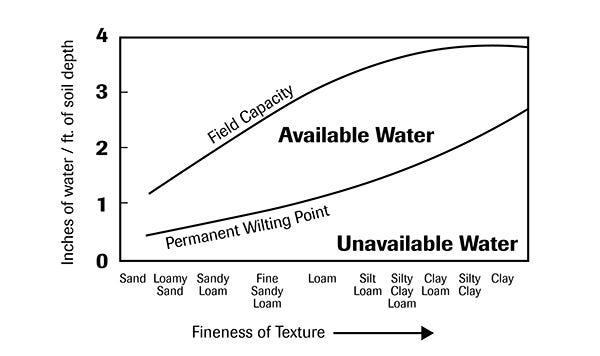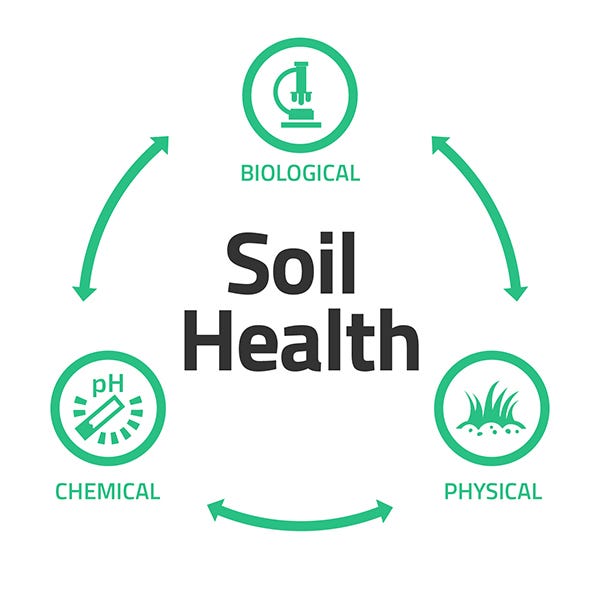March 30, 2016

USDA’s Natural Resources Conservation Service defines soil health as “The continued capacity of soil to function as a vital living ecosystem that sustains plants, animals and humans.” But what exactly does that mean? Let’s start by looking at the three components of soil: physical, chemical and biological.
“We are actually returning to an older idea,” says Dr. Jim Friedericks, outreach and education adviser for AgSource Laboratories, based at Ellsworth, Iowa. “About 35 years ago, the concept of soil quality was described as a combination of these three components.”
1) Physical: The physical characteristics of soil include size and distribution of the mineral particles in combinations of sand, silt and clay.

LIVING SOIL: It is estimated that in 1 gram of soil (enough to fit on top of a nickel) there are 1 billion living organisms, consisting of roughly 10,000 species. Most of those are single-celled bacteria but the population is very diverse.
While sand helps to keep the soil loose and increases internal drainage, small clay particles provide more surface area to retain water and nutrients within the soil. The natural physical and chemical bonds between these particles creates internal structure in the soil and small clumps called aggregates. This aggregation reduces soil compaction while increasing the space for roots to penetrate, thus supporting better plant growth. Other features such as surface slope, stoniness and internal drainage also contribute to the physical properties of soil.

Figure 1. Soil texture and water availability
2) Chemical: The qualities of the soil considered as chemical characteristics are already familiar to us through soil testing provided by laboratory services. Typical soil test results include pH, phosphorus, potassium and organic matter. Testing also looks for other nutrients necessary for plant production, such as sulfur and zinc. Recommendations for fertilizer and other additions to the soil are based on the measurable levels of these factors.
Chemical testing can also help to determine soil management practices that are needed to improve soil characteristics. For example, liming to raise pH to a favorable level for crops, or adding gypsum to counteract high sodium levels, are two applications of inputs other than plant nutrients that enhance plant growth.
3) Biological: Biological characteristics of the soil are a function of the size and diversity of the microbiological population. It is estimated that in 1 gram of soil (enough to fit on top of a nickel) there are 1 billion living organisms, consisting of roughly 10,000 species. Most of those are single-celled bacteria but the population is very diverse.
These billion organisms carry out countless biological transformations, depending on the blend of nutrients available and the physical characteristics of their environment such as temperature, aeration and moisture. These organisms compete with plants to utilize available nutrients in the soil. There are also beneficial bacteria and fungi that provide nutrient elements to plant roots while obtaining carbon from the plant as an energy source for growth.
Biological activity enhances water retention and soil absorbency, and reduces water runoff by increasing the organic matter content in the soil. Increasing the soil organic matter by 1% increases the retention of available water by one acre inch, or up to 10% of the soil’s water holding capacity.

Figure 2. Water holding capacity as influenced by organic matter
Biological activity in the soil is beneficial in retaining nutrients for later release through decomposition. The nutrients present in decomposing crop residues, especially nitrogen and carbon, control the rate of microbial growth. When there is an abundant energy source (carbon) with readily available nutrients (such as nitrogen) there is a high rate of microbial activity and nutrients in the organic material are made available. But if carbon or nitrogen are limiting then this turnover is slower.
Look at how biological, physical and chemical parts interact
“When looking at soil health, you can’t just look at one component,” notes Friedericks, “To get the entire picture you need to see how all three interact.”
For example, soil compaction (physical) limits the drainage of water through the soil which in turn increases nitrogen losses (chemical) through microbiological reduction of nitrogen in the soil’s organic material (biological). Soil testing laboratories can provide tests that will measure most of these characteristics.
There is currently a lot of attention on soil health testing, which focuses on measuring the potential rate of biological activity in the sample and the levels of carbon and nitrogen that control that rate. A soil health test score provides a number related to these characteristics, with a higher number indicating a more healthy soil, he explains.
A soil health test provides a reference point to use in gauging the current quality of your soil and the impact of any steps that are taken to improve that quality.

First step to improve soil health is to grow a cover crop
A typical first-step recommendation to improve soil health is to grow a cover crop. This will help to retain nutrients, enable vigorous soil microbial growth throughout the year and will build soil organic matter content. Other beneficial practices include reducing tillage or converting to no-till operations, adding a hay crop or pasture into an extended cropping rotation and applying manure in ways that maximize the nutrient and organic benefit to the soil.
“Anything that builds organic matter and maintains a readily decomposable nutrient source for an active microbial population in the soil will improve soil health. This in turn will enhance the overall quality of the soil, maximizing the productive capacity of the land,” says Friedericks. AgSource is a leader in ag and environmental laboratory analysis and information management services. A subsidiary of Cooperative Resources International, AgSource provides services to clients in the U.S. and across the globe. Learn more at www.AgSource.com.
You May Also Like




